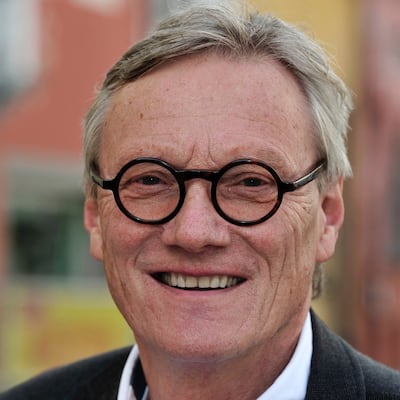Dublin offers a poor entrance to visitors, but Galway looks “like a mouth full of broken teeth”, one of the world’s top planners has said, warning that Irish planners must be able to stand up to local interest groups if cities are to grow in an environmentally-sustainable way.
Speaking of Dublin Airport, and the lands surrounding it, Wulf Daseking, architect and former head of urban planning of Freiburg in Germany, said: “It’s all concrete, there was nothing which warmed my heart, it had no identification – all engineering, no design.
“The first view of the city, its entrance, helps a lot to understand the mentality of the city. If you open the garden gate, come to the front door and you see the entrance and the entrance is okay, the rest is mostly okay.”
However, his criticism of Galway is even more scathing: “I was also shocked because when you come towards it, it was like looking at a mouth full of broken teeth ... I say to my students never go downtown to the nice historic area to see if a city is working well. To see what the mentality is in the city you must go to the suburbs.”
RM Block
Ireland has a unique opportunity to capitalise on its position as the only English-speaking country in the EU, to attract and retain a young, mobile workforce according to Daseking, whose work in Freiburg has led to it being recognised as one of Europe’s most sustainable cities.
However, Ireland looks set to squander this opportunity by not planning the type of cities young people want to live in, Mr Daseking, said. More worryingly he said, he could detect no urgency to design Irish cities to meet climate change goals.
Mr Daseking, a planning academic in Freiburg and in University College London, was in Galway last week as the keynote speaker at Reimagining the Irish City, hosted by the Royal Institute of the Architects of Ireland (RIAI), the Academy of Urbanism, and Galway City Council.

Speaking to The Irish Times after the conference he said he had the impression that people were happy to focus on the Paris climate change goals of having net zero emissions by 2050, but did not want to address the near-term target of reducing carbon emissions by at least 40 per cent by 2030.
“You have this car-orientated society, you have problems in housing, you have a lot of work to do to save energy, and above all you have the Paris paper which Ireland signed in 2015, to reduce energy consumption by about 40 per cent by 2030. Well 2030 is tomorrow.”
Mr Daseking said he directly addressed the audience of planners, architects, developers, the chamber of commerce and county council.
“I asked the people there: ‘Do you have any master plan to show that you are able to reduce your energy consumption by 2030? If so, is this master plan combined to the budget of a city, to make this a reality?’ And they looked at me as if I came from the moon.
“That is a signal of alarm for me because in 2030 those who are now governing may still be on duty. By 2050 they will have all gone so they pass the necessity to act to the next generation. For me that’s a very, very great problem.”
[ Review to blame planning system for slow progress on climate targetsOpens in new window ]
Ireland’s centralised structures, with city councils having very little power, were partly to blame for these problems he said.
“You are governed from one point here in Dublin, as Britain is from London, and the city really does not have a great say in anything. You must ask if this system is still able to face the future? The future is offering Ireland a very great chance because you are still in EU and the others have this Brexit situation, the most stupid decision they have ever made.”
The problem with centralised systems was no one took control over decision making for the city.
“You need stronger cities to decide, are you going to leave the traffic as it is today or come up with a concept to reduce it? Because if you let the private car run, you will never reach that 40 per cent reduction. What is your concept for housing? Because if you allow more housing to the outside of your cities, sprawl will continue and so will the private car circulations, unless you have a frequent, safe, clean, cheap public transport system.”
Cities needed to attract young people, who weren’t necessarily looking at the jobs market, because they could work online, but were looking at the standard of living a city provided. His students, he said, didn’t want their own private gardens, or large living spaces, but were interested in what amenities were in walking distance of their flats.
In time, he said, this is what the general population would also want. “People change their mind when they feel it in their pocket. The more you go out from the centre, the more the infrastructure will cost in the future. All these people who now think ‘my home is my castle’ they will suffer a lot in the next years with higher taxes and energy prices.”
Planners must not let their cities be hijacked by developers who claim people only want two-storey houses with front and back gardens, he said.
“Planning means you must have a strong position. Planning must hurt, because it runs against private interest. So planners have to have a knife in their pocket because the cut they need to make is very sharp, but if they don’t, you will never come to a position where you make the energy saving of 40 per cent by 2030.”


















